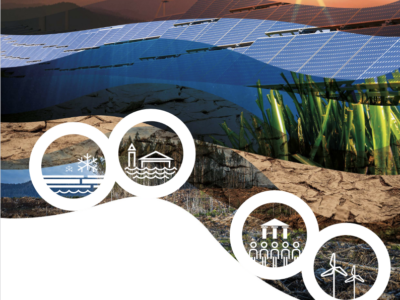precautionary principle
Dissecting the Attacks on the Endangerment Finding
EPA has identified four different arguments against the endangerment finding. None have merit.
In late 2009, EPA made a formal finding — often called the Endangerment Finding —that greenhouse gases may endanger human health and welfare. Undaunted by the overwhelming scientific evidence in favor of that finding, the Trump EPA plans to reconsider that finding. Few independent observers believe EPA will succeed, but the issue is important enough to warrant a close look. Here’s a deep dive.
CONTINUE READINGEPA Jumps the Shark
Just as a past dictator rejected modern genetics, Trump rejects climate science. For both, evidence was no match for ideology and ego.
Honestly, EPA’s embrace of climate denial is just plain embarrassing. And the rest of the world will justifiably view it as one more sign that the U.S. has taken leave of its senses. Trump can change the name of a water body on maps, but he can’t change scientific reality. The scientific evidence about the reality of climate change, its causes, and its harms is incredibly well-established. It’s based on many different types of data and models, which have been tested and retested.
CONTINUE READINGWhat policies lead to greenhouse gas emissions declines?
A recent study emphasizes the role of policy mixes in driving short-term emissions reductions
In a series of posts (beginning here, and ending here) last month, I outlined an approach to climate policy that emphasizes the role of subsidies in building political support and technological progress for climate policy. In doing so, I drew heavily on existing political science research and case studies from North America and Europe. But …
Continue reading “What policies lead to greenhouse gas emissions declines?”
CONTINUE READINGThere are Piles of Coal in America’s Christmas Stocking
Coal is piling up, unused, at powerplants across the country
Bad children, supposedly, will get only lumps of coal in their stockings. That could be taken as a metaphor for the anti-environmental programs coming down the line, but I have in mind something a bit less metaphorical. According to a recent report, coal-fired power plants have immense piles of coal – 138 million tons, equal …
Continue reading “There are Piles of Coal in America’s Christmas Stocking”
CONTINUE READINGWhat’s at Stake in the ICJ Hearings
Representational sovereignty, Indigenous rights, and ecocide are all key to the climate obligations of states, write guest contributors Mollie Cueva-Dabkoski, Julia Phượng Nguyễn, and Molly-Mae Whitmey.
A new chapter of global climate accountability has hopefully begun, as the International Court of Justice (ICJ) prepares to issue an advisory opinion on the Obligations of States in respect of Climate Change. Hearings for that opinion began today with over 100 countries and other parties presenting over two weeks. At the request of the U.N. …
Continue reading “What’s at Stake in the ICJ Hearings”
CONTINUE READINGEarth system tipping events now seem inevitable – what does this mean for climate governance?
Building meaningful earth system governance creates multiple new research challenges
A tipping point is a system threshold beyond which change becomes self-perpetuating until a qualitatively different stable state is reached. For example a rainforest turns into a grassland, or an ice sheet melts completely. Such shifts are non-linear, and practically irreversible. Fears that growing human impacts might push aspects of the global climate past such …
CONTINUE READINGFlorida Governor DeSantis’ Head-In-The-Sand Climate Change Policies
New Florida Law Strikes Term “Climate Change” From State Laws, Promotes Fossil Fuels & Rejects Renewable Energy Projects
Florida Governor Ron DeSantis, in coordination with an equally myopic and partisan Florida Legislature, has approved new state legislation (HB 1645) that eliminates the term “climate change” from numerous existing Florida statutes that former Republican Governor Charlie Crist signed into law in 2008. The legislation, which takes effect on July 1st, is not just symbolic: …
Continue reading “Florida Governor DeSantis’ Head-In-The-Sand Climate Change Policies”
CONTINUE READINGThe global conversation about solar geoengineering just changed at the UN Environment Assembly. Here’s how.
Duncan McLaren and Olaf Corry reflect on the implications of the UNEA-6 non-decision on solar radiation modification for research and governance
As we wrote in part 1, a Swiss-led proposal to the UN Environment Assembly (UNEA) to establish an expert group on solar radiation management (SRM) proved divisive and was eventually withdrawn. Here we explore why, and what that means for any global conversation about SRM. SRM has long generated concerns that, as a powerful lever …
CONTINUE READINGCountries failed to agree first steps on solar geoengineering at the UN. What went wrong?
Duncan McLaren and Olaf Corry observed as diplomats in Nairobi wrestled with a resolution on solar radiation management
In the last weeks, diplomats from all over the world were negotiating more than twenty draft resolutions at the UN Environment Assembly (UNEA). The Assembly is a biennial intergovernmental meeting which sets the global environmental agenda. It also sets the strategy for the UN Environment Programme (UNEP), and outlines policy responses to address emerging environmental …
CONTINUE READINGCost-Benefit Analysis and Deep Uncertainty
How should agencies take into account “the things we know we don’t know”?
Since 1981, cost-benefit analysis (CBA) has been at the core of the rule making process. OIRA, the so-called “regulatory czar” in the White House, must approve every significant regulation based on a review of its CBA. But CBA has had a major blind spot. It embodies techniques for analyzing possible harmful outcomes when the probability …
Continue reading “Cost-Benefit Analysis and Deep Uncertainty”
CONTINUE READING









